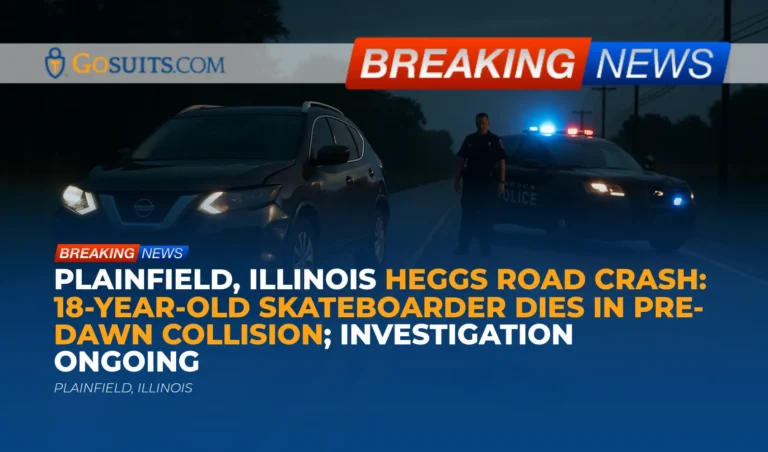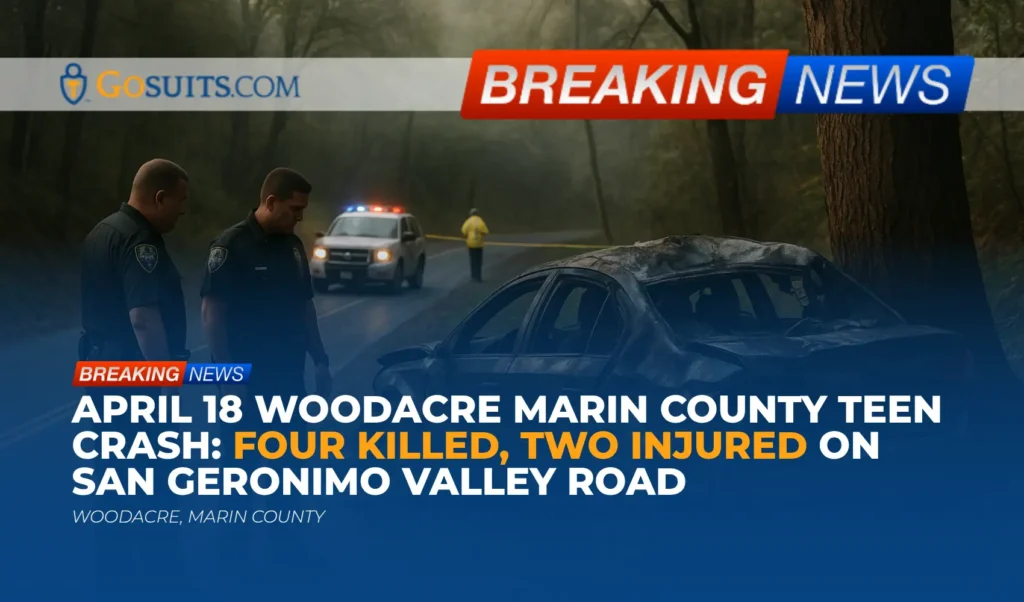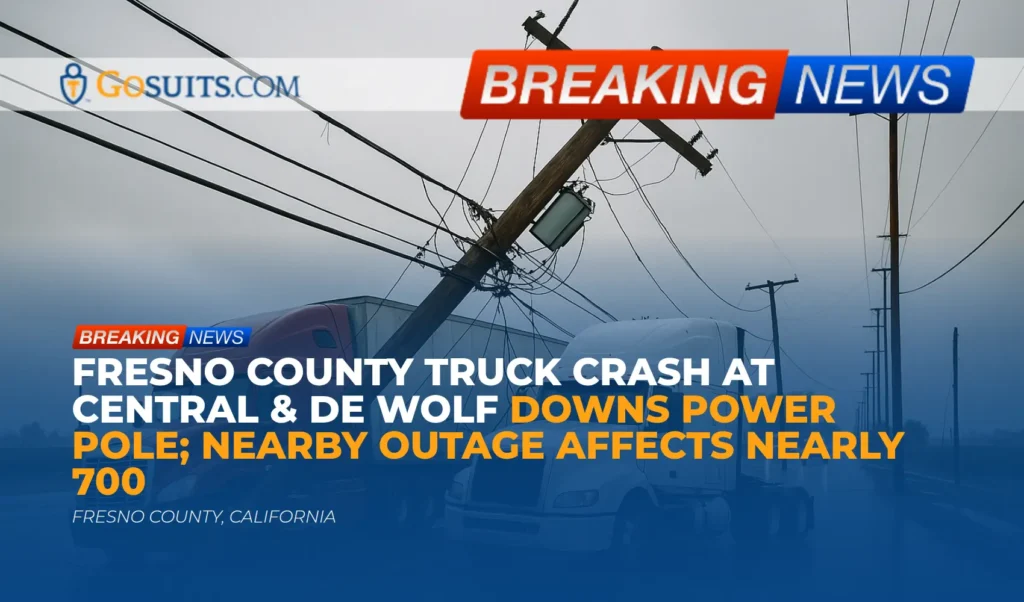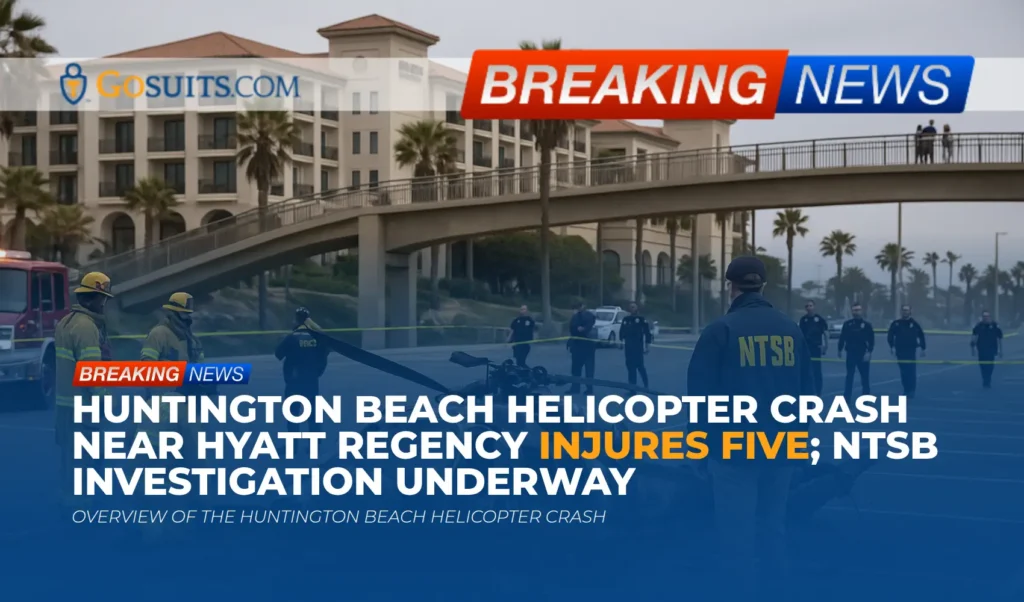- What we know about the Heggs Road crash in Plainfield, Illinois
- Why low light and visibility conditions matter
- Illinois traffic and civil laws that may be relevant
- Potential civil liability questions in crashes involving skateboarders
- Immediate steps families often take after a fatal crash
- Documenting the scene and preserving critical evidence
- Insurance issues after a fatal roadway collision
- Supportive resources and practical contacts
- Safety reminders for drivers and road users in low light
- Commentary from Gosuits Plainfield, Illinois Personal Injury Attorney
- Time-sensitive next steps: why acting promptly matters
What we know about the Heggs Road crash in Plainfield, Illinois
Plainfield police reported a tragic collision on the morning of October 6. According to officials, an 18-year-old Plainfield resident riding a skateboard on southbound Heggs Road was struck from behind by a gray 2020 Nissan Rogue traveling in the same direction at approximately 6:30 a.m. The driver told police they did not see the skateboarder, and authorities noted sunrise that day was not until shortly after the crash time, meaning it was still dark. The skateboarder was transported to Rush Copley Medical Center and was later pronounced deceased. The driver was also taken to the hospital with non-life-threatening injuries. At this stage of the investigation, police indicated there was no immediate indication of wrongdoing by the driver and no charges were pending, and the investigation remains ongoing.
In the days following, the community shared condolences, and friends organized efforts to assist the family with memorial arrangements. While criminal charges are not reported at this time, that does not preclude separate civil processes in which evidence and liability are evaluated under different standards. Families often have questions about how civil claims work, how insurance applies, and what records they may obtain to understand what happened. This article summarizes publicly reported details and provides general legal context and resources relevant to fatal roadway incidents in Illinois.
Why low light and visibility conditions matter
Reduced visibility is a known risk factor for roadway incidents. National safety authorities consistently report that many pedestrian fatalities occur in darkness or low-light conditions. Although skateboards are not the same as walking or cycling, a person on or near a roadway in low light faces similar visibility challenges.
Key visibility facts from federal safety agencies:
- Night and low-light risk: National Highway Traffic Safety Administration publications show that most pedestrian fatalities occur in dark conditions. Dark roadway environments significantly reduce detection distances and reaction time for drivers, especially at typical suburban speeds.
- Conspicuity and detection: The Federal Highway Administration has emphasized that roadway lighting, retroreflective materials, and other visibility countermeasures can improve motorists’ ability to perceive and react to vulnerable road users.
For additional background, see NHTSA’s pedestrian safety materials and FHWA’s resources on nighttime visibility:
In settings like Heggs Road during pre-dawn hours, the combination of darkness, roadway geometry, background lighting, glare from oncoming traffic, and driver workload can make it harder to detect a person traveling ahead. Whether a driver exercised reasonable care under those conditions is a fact-specific inquiry that depends on evidence such as lighting conditions, speed, lane position, sight lines, and the presence of any reflective materials or illumination on vehicles, clothing, or devices.
Illinois traffic and civil laws that may be relevant
Driver’s duty of due care toward people on or near the roadway
Illinois law requires motorists to exercise due care to avoid colliding with pedestrians and to take proper precautions upon observing any person who may be vulnerable. While statutes specifically reference pedestrians, the core principle of due care is often examined in any scenario involving a person on or near the roadway, including individuals using non-motorized devices.
Statutory reference: 625 ILCS 5/11-1003.1.
Comparative negligence
Illinois follows a modified comparative negligence framework, where a claimant’s recovery can be reduced in proportion to their share of fault, and recovery is barred if that share exceeds 50 percent. In fatal collision cases, insurers and defendants often raise comparative fault arguments. A detailed investigation is usually necessary before assigning responsibility.
Statutory reference: 735 ILCS 5/2-1116.
Wrongful Death Act and Survival Act
Illinois provides two primary civil avenues after a fatal incident. A wrongful death action seeks damages for the loss to surviving next of kin, while a survival action allows recovery for harms the decedent suffered before death that survive to the estate. These are distinct claims with different types of damages and beneficiaries.
- Wrongful Death Act: 740 ILCS 180
- Survival provisions: 755 ILCS 5/27-6
Statutes of limitation and claims against public entities
Illinois’ general limitation period for wrongful death claims is two years, subject to specific exceptions in the statute. If potential claims involve a local public entity or employee, shorter deadlines may apply under the Tort Immunity Act, and there can be heightened procedural requirements. Determining the correct deadline requires close attention to the facts and the identity of all potentially responsible parties.
- Wrongful Death Act limitation: 740 ILCS 180 (see Section 2)
- Local Governmental and Governmental Employees Tort Immunity Act limitation: 745 ILCS 10/8-101
Insurance and financial responsibility
Illinois requires drivers to carry liability insurance, and state law also addresses uninsured and underinsured motorist coverage. Whether a particular policy applies, and in what amounts, depends on the specific policy language, the household’s coverages, and how the incident occurred.
- Mandatory liability insurance: 625 ILCS 5/7-601
- Uninsured and underinsured motorist coverage: 215 ILCS 5/143a-2
Separate rules apply to claims involving roadway design or maintenance by public entities, which may include immunities and special defenses under Illinois law. Those analyses are highly fact dependent.
Potential civil liability questions in crashes involving skateboarders
When a person riding a skateboard is struck by a motor vehicle, investigators and insurers commonly evaluate many of the same issues seen in pedestrian or cyclist cases. The presence or absence of criminal charges does not determine civil fault. Civil liability is decided under a preponderance of the evidence standard, and multiple parties or factors can share responsibility.
Key questions that often arise include:
- Driver attentiveness and lookout: Was the driver keeping a proper lookout ahead and to the sides given the time of day, lighting, and known traffic conditions on Heggs Road? Did the driver scan the roadway sufficiently to detect a person traveling in the lane ahead?
- Speed and stopping distance: Was the vehicle’s speed appropriate for the lighting and roadway environment? Even if within the posted limit, higher speeds in darkness can extend stopping distances and reduce time to react.
- Headlights and illumination: Were the vehicle’s lights operating and set appropriately for pre-dawn conditions? Low beams, high beams, and auxiliary lighting can affect detection distance. Investigators sometimes assess headlamp condition, aim, and lens clarity in serious crashes.
- Roadway and environmental conditions: What were the sight lines, ambient lighting, presence of streetlights, curves, hills, or visual clutter along Heggs Road? Are there known visibility challenges in that corridor at dawn?
- Lane position and lateral clearance: Where in the lane was each party traveling? Did either party make any sudden lateral movements? Physical evidence such as tire marks, debris fields, and vehicle damage patterns can help reconstruct paths of travel.
- Conspicuity of the person on the roadway: Was any retroreflective material, lighting, or high-visibility clothing present? While the law does not always require specific gear for non-motorized users, visibility measures can be relevant to how insurers and juries evaluate comparative fault.
- Distraction and impairment screening: Investigations often examine whether device use, fatigue, or other impairments may have affected driver perception or reaction. Those findings depend on evidence gathered by law enforcement.
- Vehicle data and third-party footage: Data from event data recorders and doorbell or commercial cameras can refine speed and timing analyses. Timely preservation is critical.
- Local ordinances and roadway rules: Some municipalities regulate where skateboards may be used. Even where a local rule exists, Illinois’ comparative negligence statute means fault and causation still turn on the total evidence.
Each of these issues ties back to the central civil law question: did any party fail to use reasonable care, and did that failure contribute to the collision and resulting harm. Families should be aware that insurers often start evaluating these points immediately, which is why early preservation of evidence is so important.
Immediate steps families often take after a fatal crash
After a loss, many families want a clear path to obtain information and protect their rights. The following steps are commonly used in Illinois. Because what someone says to an insurance company can be used against them later, it is wise to consult an attorney first before making insurance claims or recorded statements.
Obtain official records
- Police crash report and supplemental materials: Request the full crash report from the investigating agency’s records unit. Ask about any supplemental narratives, scene diagrams, measurements, photos, and witness statements. If copies are not immediately available, submit a written request under the Illinois Freedom of Information Act and note your relationship to the decedent. FOIA overview: Illinois Attorney General FOIA information.
- Coroner’s records: In counties served by a coroner’s office, families can request the final autopsy report and toxicology results once complete. These documents can take weeks to finalize. Ask the office about expected timelines and any authorization forms required.
- Death certificate: Certified death certificates are issued through the Illinois Department of Public Health and local vital records offices. Guidance is available here: IDPH death records.
- State crash report portal: In some cases, crash reports are accessible through state systems. See the Illinois State Police page: Illinois State Police Crash Reports. Note that local police departments may maintain reports separately.
Preserve evidence early
- Vehicle preservation: Ask that involved vehicles be preserved without repairs until they can be inspected. Event data recorder information may be overwritten if power cycles occur.
- Scene and camera footage: Identify nearby homes or businesses with cameras. Many systems overwrite within days. A prompt, respectful request to preserve footage can make a difference.
- Witness information: Ensure contact details for witnesses are recorded. Written statements taken soon after an event are often more detailed and reliable.
- Personal effects and equipment: Maintain the skateboard and clothing in their post-incident condition for inspection and photography.

Approach insurance communications with care
- Liability carrier: The at-fault driver’s insurer may reach out quickly for statements or authorizations. Speaking before understanding your rights can affect the outcome. Consult an attorney first.
- Household coverages: Families may have uninsured or underinsured motorist coverage within their own auto policies that could apply in a fatal crash. Policy interpretation is complex and highly specific to the policy language.
Documenting the scene and preserving critical evidence
Thorough documentation supports a fair evaluation of what happened. In serious collisions, experienced investigators often follow a structured process:
- Measure and map: Document lane widths, shoulder edges, fixed objects, and relevant signage. Map final rest positions of the vehicle and person, along with any debris fields, scrape marks, or tire impressions.
- Lighting survey: Return at the same time of day and weather to photograph ambient light levels, streetlights, glare, and contrast from oncoming traffic. Note any non-functioning lights.
- Vehicle inspections: Record headlight condition, aim, and operation. Photograph the front end for damage patterns that can indicate impact point and orientation. Retrieve event data recorder information where available.
- Human factors: Assess sight lines, visual clutter, and potential “looked but did not see” factors that can delay detection. Review driver workload in the moments before impact.
- Third-party data: Seek doorbell, dashcam, or commercial camera footage. Request 911 audio, CAD logs, and dispatch timestamps to corroborate timelines.
The earlier these steps begin, the better the chances of preserving objective evidence that helps everyone understand the event.
Insurance issues after a fatal roadway collision
Insurance is often complex in fatal crash cases, especially where the driver says they “did not see” the person ahead. That statement is not, by itself, a legal defense. Civil fault depends on whether the driver acted reasonably under the circumstances and whether any other parties or conditions shared responsibility.
- Bodily injury liability coverage: Typically responds first, subject to limits and exclusions. The insurer may dispute fault or argue comparative negligence.
- Uninsured and underinsured motorist coverage: May apply if the at-fault driver has no insurance or insufficient limits. These coverages are addressed in Illinois law and may be part of a household auto policy. See 215 ILCS 5/143a-2.
- Medical payments coverage: Sometimes available regardless of fault, though limits are often modest.
- Multiple insurers: If several policies could apply, insurers may disagree over primary versus excess coverage, leading to delays. Coordination and documentation are important.
Avoid providing recorded statements to any insurer before obtaining legal guidance. Statements can be used to shape fault assessments and settlement evaluations.
Supportive resources and practical contacts
Families coping with sudden loss can benefit from both official records and supportive services. While specific office contact details can change, the following points of contact and resources are commonly relevant in Will County and across Illinois:
- Plainfield Police Department Records Unit: Request the crash report number, supplemental narratives, photos, and diagrams. If you are unsure of the process, ask for guidance on submitting a written request under FOIA.
- Will County Coroner’s Office: Inquire about how to request the autopsy report and toxicology results. Ask about expected completion timeframes and any next-of-kin authorization requirements.
- Illinois Department of Public Health: For certified death certificates and vital records processes, see IDPH death records.
- Illinois State Police Crash Reports: Some reports may be accessed here, depending on the investigating agency’s practices: ISP Crash Reports.
- FOIA guidance: For information on requesting public records in Illinois: Illinois Attorney General FOIA.
- Emotional support: The SAMHSA National Helpline provides free, confidential support and referrals 24 hours a day: SAMHSA National Helpline.
If you are outside Will County, your local county coroner or medical examiner, city or village police records unit, and state vital records office serve parallel roles. When calling, identify yourself and your relationship to the decedent, have the incident date and location ready, and request written instructions for obtaining records.
Safety reminders for drivers and road users in low light
Communities often seek to honor those lost by learning from the circumstances and promoting safer habits. The following reminders echo recommendations from federal safety agencies and can reduce risk in early morning and evening hours:
- For drivers:
- Reduce speed in darkness and scan farther ahead. Slower speeds increase reaction time and reduce stopping distance.
- Use headlights appropriately for conditions. Keep lenses clean and ensure proper aim and function.
- Expect vulnerable road users on residential and collector roads, even when it seems quiet.
- Minimize distractions and avoid device use. Even brief glances away can erase critical seconds of detection time.
- For people traveling outside vehicles:
- Increase conspicuity with retroreflective elements or lights when possible. Position yourself to be most visible to approaching traffic.
- Choose routes with better lighting and predictable driver sight lines when available.
- Stay alert to approaching vehicles and be prepared to adjust position if a driver’s path or speed seems unsafe.
While responsibility ultimately depends on the law and facts, simple visibility measures and careful speed management can meaningfully lower risk during pre-dawn travel.
Commentary from Gosuits Plainfield, Illinois Personal Injury Attorney
Our hearts go out to the family, friends, and neighbors mourning this young life. Sudden loss on a familiar road is devastating, and we extend our sincere condolences. This article is shared for educational purposes and general information to help the community understand how investigations and civil claims often unfold after fatal roadway incidents in Illinois.
Based on what has been publicly reported, visibility and darkness were central circumstances in this collision. In civil cases, the focus is not only on whether someone “saw” another road user but whether each person acted reasonably given the conditions. That analysis typically examines speed, lighting, lookout, and how long each person was within visible range. It also considers whether roadway features or maintenance played any role. These questions are answered with evidence, not assumptions, and it is appropriate that investigators continue to examine the facts.
Insurance companies and large corporations have structured processes designed to protect their financial interests from the very first day. Adjusters often ask for statements and broad authorizations quickly. They may highlight uncertainty about visibility or argue comparative fault before the full evidence is preserved. Without guidance, families can inadvertently provide statements that are later used to minimize responsibility or reduce the value an insurer assigns to a claim. Understanding your rights and the kinds of evidence that matter can help level the playing field.
Obtaining a free consultation before speaking to any insurer can be an important step. It allows a grieving family to understand timelines, insurance layers, and the types of proof investigators look for, without pressure or obligation. A knowledgeable legal team can also move promptly to request preservation of vehicle data and third-party video, which is often time sensitive.
Time-sensitive next steps: why acting promptly matters
What to do
- Request and organize official records: Ask the investigating agency for the crash report number, then request full copies of reports, diagrams, and photos. Follow up with the county coroner’s office for autopsy and toxicology when available, and request certified death certificates from state or local vital records.
- Preserve evidence immediately: Ask that involved vehicles be held without repairs, and seek to preserve any nearby camera footage before it is overwritten. Keep the skateboard and clothing unaltered and store them securely.
- Track all insurers but pause statements: Identify the at-fault driver’s insurer and any household policies that might provide uninsured or underinsured motorist coverage. Hold off on recorded statements or authorizations until rights are clearly understood.
- Calendar critical deadlines: Note potential two-year wrongful death timelines and any shorter deadlines that could apply if public entities are involved. Build in time for investigation and expert analysis.
- Seek a free legal consultation: Before contacting insurers, schedule a no-cost consultation to understand options, evidence needs, and how comparative negligence may be argued. What is said early can influence later evaluations.
Why it matters now
- Evidence is perishable: Camera systems routinely overwrite within days or weeks. Vehicle black box data can be lost if vehicles are moved or repaired. Roadway conditions change, and witness memories fade quickly.
- Insurers move quickly: Adjusters begin shaping liability assessments early. Delays in gathering evidence can leave critical questions unanswered or allow incomplete narratives to take hold.
- Deadlines can shorten options: Statutes of limitation and claim notice requirements can bar claims entirely if missed. Early planning preserves the ability to make informed choices.
- Clarity helps with arrangements: Having a plan for records, timelines, and insurance communications reduces stress during a difficult time and helps families focus on remembrance and support.

Context and outcomes
- A careful, fact-driven process: Civil fault determinations are evidence based. Lighting surveys, speed analysis, and third-party footage often add clarity that news summaries cannot capture.
- Multiple avenues of recovery: Potential sources can include the at-fault driver’s liability coverage and household uninsured or underinsured motorist benefits. In rare cases, roadway design or maintenance issues can be implicated, with different rules and defenses.
- Respect for the person and story: Documenting who someone was and what was lost is a meaningful part of these claims and can be done with dignity and care.
Where and when it matters
- Local roads at dawn and dusk: Suburban connectors like Heggs Road see regular traffic during low-light commute hours. Visibility and speed management are crucial in these windows.
- From the first week onward: The first 7 to 30 days are critical for evidence preservation and for setting a clear communication plan with insurers.
- Across jurisdictions: If a collision implicates entities beyond the driver, different rules can apply. Early identification of all potentially responsible parties helps avoid missed deadlines.
Trusted information
- Pedestrian and visibility safety: NHTSA pedestrian safety, FHWA nighttime visibility
- Illinois records and law: Illinois FOIA, ISP Crash Reports, IDPH death records, Driver due care, Comparative negligence, Wrongful Death Act, Survival provisions, Tort Immunity Act limitations, Mandatory insurance, UM/UIM coverage






